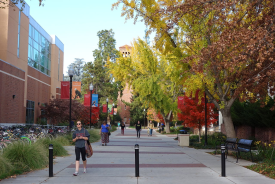41 Shipwrecks Down The Black Sea Discovered: University Of Southampton Academics Believe 3D Tech Has Far To Go! [VIDEO]
ByIn a project called "Black Sea Maritime Archeology" led by the University of Southampton's Center for Maritime Archeology and funded by the Expedition and Education Foundation (EEF), 41 shipwrecks were discovered down the bottom of the Black Sea. The academics and scientists at Southampton University believed that 3D technology has far to go in the future, considering the fact that it has played a major role in mapping the underwater wonders through satellite.
The University of Southampton researchers/maritime archeologists completed the project collecting 41 breathtaking shipwrecks through the aid of among the most technologically-advanced underwater survey systems. But, what generally brought all these signals together off-coast the Greek Islands is the underwater 3D mapping technology.
Underwater, the all-new ROV (Remotely Operated Vehicle) successfully scoured the seabed while hitting a depth record of 5,905 feet and a speed of over 6 knots. Through the ROV, beautiful shots of the underwater wonders were effortlessly taken.
But the highlight of all the shipwrecks is a huge ancient ship graveyard seated graciously in the middle. The collection of eerie photos of well-preserved never-before-seen medieval vessel, the Ottoman and the Byzantine ships all with intact rope coils forever speaks as an eternal achievement of a certain kind of 3D tracking technology, called the photogrammetry. The photos nevertheless show the preserving potentials of the anoxic conditions (lack of oxygen) in the underwater world, Seeker reported.
The team of researchers, led by Jon Adams, founding director of the University of Southampton's Center for Maritime Archaeology, was very much delighted by what came out of the project. There is no better way to capture the astonishing shipwrecks below without disturbing the seabed than the way brought about by the collaboration of the state-of-the-art underwater survey systems, 3D, satellite, sonar tech and the ROV, ABC News reported.
"Three-dimensional photogrammetry software then combines thousands of still photos shot from multiple angles to create a complete digital model that can be studied and manipulated. Researchers controlled the ROVs in real time from a command center on the ship, working 24 hours a day to maximize the area of seafloor they could cover with the expensive equipment. The 41 wrecks were dispersed across roughly 2,000 square kilometers", National Geographic reported.
But without spilling it all out, academics at the University of Southampton believed that the breakthrough of all the technologies used is the 3D. By all means, it is the first time on record that a complete underwater tracking system has been converted to 3D.
Thus, 3D has far to go in the future.
© 2025 University Herald, All rights reserved. Do not reproduce without permission.








